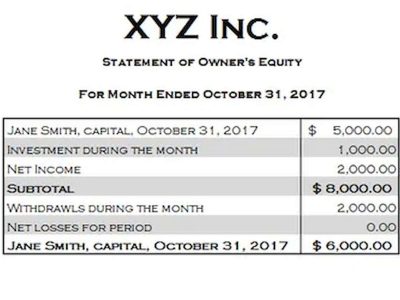
These include raw materials, direct labor, and utilities, which increase or decrease as production levels change. A company that manufactures goods will experience higher variable costs when producing more units and lower costs when demand drops. A variable cost is a cost that varies in relation to changes in the volume of activity.

Products
- Variable costs are not just accounting figures; they play a critical role in day-to-day business operations.
- A variable cost increases as the level of activity increases; for example, the total cost of direct materials goes up in conjunction with increases in production volume.
- If you pay based on billable hours, commissions, or piece-rate labor rates (when workers are paid based on how many units they produce), these would be considered variable costs.
- A thorough analysis of variable costs helps in establishing a pricing strategy that covers costs while remaining competitive.
- Start your free trial with Shopify today—then use these resources to guide you through every step of the process.
The raw materials are the inventory of unprocessed materials purchased to produce a final product. The raw materials are tangible items that can be identifiable and measurable. For example, steel is a raw material used in the construction of buildings, and fabric is used in the production of clothing. One of the most common uses for variable expense info is to set prices for your products or services. a variable cost is a cost that The longer your production facility is actively operating, the more power and water it’s likely to use.
- This could involve securing bulk discounts, negotiating longer payment terms, or finding alternative suppliers that offer lower prices.
- The graph on the right side shows the fixed cost curve, which remains constant no matter whether the quantity produced increases or decreases.
- Variable costs play a significant role in determining the pricing of goods or services.
- Where average variable cost is most useful, however, is when you’re trying to calculate your average costs while accounting for multiple products with different variable costs per unit.
- Additionally, she’s already committed to paying for one year of rent, electricity, and employee salaries.
- This decision should be made with volume capacity and volatility in mind as trade-offs occur at different levels of production.
Related AccountingTools Courses
Variable costs are a direct input in the calculation of contribution margin, the amount of proceeds a company collects after using sale proceeds to cover variable costs. A salaried accountant or company lawyer will be paid whether the company’s output is 100,000 units or 0 units. Additional cost incurred to the total cost when one more unit of output is produced. Variable costs like fuel or transportation can have a significant environmental impact, especially in industries with extensive supply chains. By focusing on reducing emissions related to variable costs, businesses contribute to a healthier environment and align themselves with evolving regulations aimed at reducing carbon footprints. This can include investing in technology, automating processes, and training employees to work more efficiently.

Introduction to Fixed and Variable Costs
- Utilities are also variable in cost and are important when a manufacturing line turns on equipment and starts production.
- The break-even point refers to the minimum output level in order for a company’s sales to be equal to its total costs.
- For example, when a firm starts a new project, they try to project future expenses.
- Prices must be set so that the contribution margin is greater than zero, or else a business will have no opportunity to generate a profit.
- Total variable cost can also be calculated by adding all the variable expenses incurred to produce a product or provide a service.
Fixed costs are commonly related to recurring expenses not directly related to production, such as rent, interest payments, insurance, depreciation, and property tax. Fixed costs are opposite of variable costs, expenses that fluctuate in line as more or less products are manufactured. When businesses experience growth, their variable costs Certified Public Accountant will naturally rise as they produce more.

Formula for Calculating the Variable Cost Per Unit
- Variable costs are commonly designated as COGS, whereas fixed costs are not usually included in COGS.
- Conversely, businesses such as restaurants or those offering customizable products can face significant cost fluctuations.
- The cost of raw materials varies with the level of production, and it is a significant component of the total variable cost.
- For any business, cost analysis and control are important in improving its efficiency.
- Companies can generate more profit per additional unit produced with higher operating leverage.
- In economies of scale, variable costs as a percentage of overall cost per unit decrease as the scale of production ramps up.
” Accounting software or spreadsheets can be used to quickly calculate variable costs and see how such scenarios can affect gross profit margins. Decision makers can then develop strategies to protect or expand margins if variable costs change. The average variable cost, or “variable cost per unit,” equals the total variable costs incurred by a company divided by the total output (i.e. the number of units produced). While variable costs tend https://www.bookstime.com/ to remain flat, the impact of fixed costs on a company’s bottom line can change based on the number of products it produces.

When a manufacturer line ramps up production, it consumes more energy. Commissions are a percentage of a sale’s proceeds that are awarded to a salesperson as additional compensation. Difficult to control in the short run, but can be change in the long run. The Woodard Report is a collection of articles from several authors to advance the understanding and knowledge surrounding the accounting profession and technologies connected to that profession. In effect, a company with low operating leverage can be at an advantage during economic downturns or periods of underperformance.
Leave a Reply